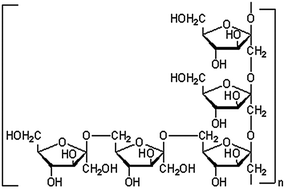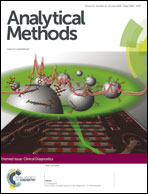UPLC-TOF/MS based urinary metabonomic studies reveal mild prevention effects of MDG-1 on metabolic disorders in diet-induced obese mice†
Abstract
Metabolic disorders such as hyperglycemia, dislipidemia, and insulin resistance often occur in obese populations long before the manifestation of type 2 diabetes mellitus (T2DM), cardiovascular disease, and cancer. The prevention of metabolic disorders in obese individuals might decrease the morbidity of diabetes and other metabolic diseases. Ophiopogon japonicus is a traditional Chinese medicine used for thousands of years to treat patients with diabetes. We showed in previous work that MDG-1, a polysaccharide extracted from Ophiopogon japonicus, could treat T2DM. To investigate whether MDG-1 can prevent metabolic disorders, metabonomic methods, together with multivariate analysis, were used to evaluate the role of MDG-1 in the prevention of metabolic disorders in a high-fat, diet-induced obesity (DIO) model. Thirty-six male C57BL/6 mice (8 weeks old) were randomly divided into a control group (normal chow), a model group (high-fat chow), and an MDG-1 group (high-fat chow dosed with 300 mg kg−1 MDG-1). After 16 weeks of treatment, urinary metabonomic studies were performed using ultra-performance liquid chromatography-time of flight mass spectrometry in combination with multivariate statistical analysis. Indices of body weight, food intake, fasting and fed blood glucose, oral glucose tolerance test (OGTT), and OGTT plasma insulin were collected. MDG-1 treatment was shown to exert mild ameliorative effects on bodyweight gain, fed blood glucose levels, OGTT, and the insulin resistance of DIO mice. In addition, 21 potential biomarkers of glucose, fatty acid, phospholipid and amino acid metabolism, the tricarboxylic acid cycle and purine metabolism were identified. Based on these compounds, it is suggested that MDG-1 could reduce glucose, the glucose-related products lactic acid and N-acetyl-D-glucosamine, and lipids, thus normalizing tricarboxylic acid cycle activity while decreasing purine, hence alleviating oxidative stress in DIO mice. Although there was no obvious alteration in visible biomedical indices, invisible metabolic disturbances did occur with MDG-1 supplementation, which may lead to the possible elucidation of the action of MDG-1 against metabolic disorders.


 Please wait while we load your content...
Please wait while we load your content...